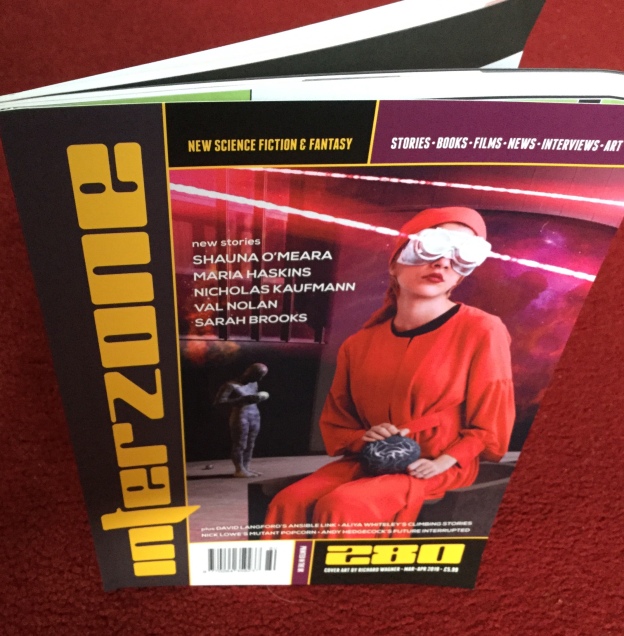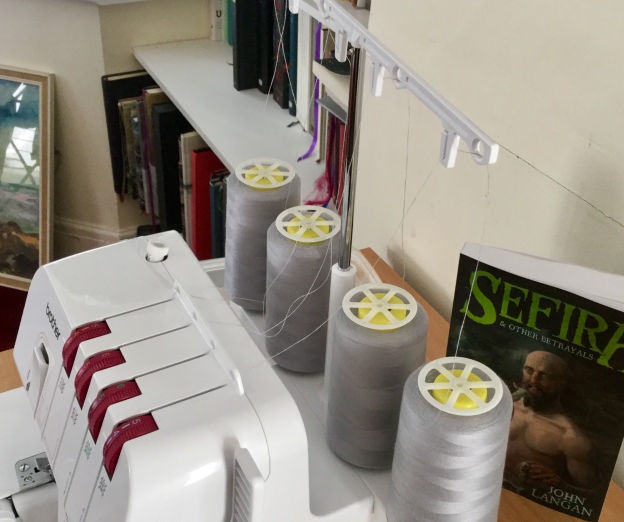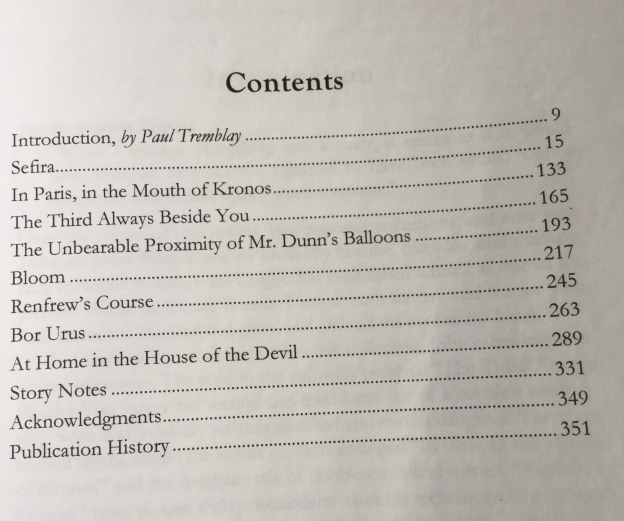Interzone #280



TTA PRESS (Mar – Apr 2019)
My previous reviews of TTA Press HERE
Fiction by Val Nolan, Maria Haskins, Nicholas Kaufmann, Sarah Brooks, Shauna O’Meara.
When they read this magazine’s fiction, the above eyes’ thoughts will appear in the comment stream below…

 UNCHAIN THE BEAST by Stephen Volk
UNCHAIN THE BEAST by Stephen Volk



“, every perfect world is somebody’s dystopia.”
But this story is not about relativism, but about something special that, I believe, transcends relativism. All my life – and I am 71 now – I have read literature to transcend my humanity, my fallible body, but mostly my fallible mind, creating a sort of religion, that I have in my latter years enhanced, I believe, by the Gestalt real-time reviewing of hyper-imaginative fictions-as-truth, works like this one. Especially this one. It has a missionary feel, as if its own obliquely disarming missionary force has taken me with its mind-frazzling, surgically-forensic language of words, scientific and near-neologistic words that have flayed and flensed me, body and mind, reframed me, primed to meet God, not as on earth with mere prayer or myths like Christ, but in the spaces beyond, symbolised here by two asteroids balanced like Siamese twins, one Greater, the other Blessed Lesser. Amid the mind-frazzling of myself as facilitated by this work, I outdo myself, even when realising what a “gospel-addled mind” it is with which I have been brainwashed; yes, I outdo myself because it has a twist in this tale, a collective unconsciousness, a Gestalt, a “magnetoacquiesence” – which is God, which art in Heaven? An old fashioned nuclear bomb in a holy psalter become an illuminated manuscript, i.e. symbolised by these illustrated pages in Interzone that arguably have been interpreted correctly as a matter of faith by the Gestalt reader that is us, despite the wrong interpretations that may have fallibly been embedded by the author, any author on earth who continues to bear the burden of the generic Intentional Fallacy, a fallacy of literary theory that many have said over the years pervades all art and literature, a fallacy now finally transcended?
My previous reviews of this author: https://dflewisreviews.wordpress.com/tag/val-nolan/
“The first time I saw Mother Mary she was standing in the pulpit at the Pacific Priory, looking immeasurably tall, cloaked in her red vestments.”
I am not sure I fully understood or appreciated this work as much as I should have done. It seems to echo the previous story inasmuch as the narrator and others are surgically prepared (“fusing neural implants to our flayed nerves”) for greater purpose of singing, yet, while tied, like the previous story, to a religious aspect, religious as embodied by the above quote, the singing is effectively for cynical war purposes amid a Wild West sort of scenario involving enemy bots, and trains, and steeds like pig-lizards. With a backstory involving the narrator, one of few people left with the singing powers, her dead lover and a new male friend who mistakenly shoots at her.
“Sometimes it seemed like there were more pottery-makers than there were animals in the Garden.”
…and I have a feeling that is a hidden-coriander way of describing poetry-makers, among whom I count myself. And this author, too. A truly marvellous fable of angels with inarguable tasks to fulfil, tasks given by God (here called On-High). With oblique references, references just one slot away from the path we remember they took, to Biblical matters, like the Garden of Eden, the Red Sea Exodus, and the killing of first born, free will, fate, leading to time and cause/ effect paradoxes, our world today, a pattern of Gestalt with fabulous moving parts. I love the language of flowers in this context and its eventually realised raison d’être. And the characters of the angels, particularly the one we get to know most. And the serendipity of this story’s astonishing mutual synergy with Cyberstar.
My previous reviews of this author: https://dflewisreviews.wordpress.com/tag/nicholas-kaufmann/
“The two coffees are for safety. For betting against fate. We take turns at buying, at practising the belief that the other will be there to drink it.”
A story cross-rhythmed with Totenhaus from the current counterpart Black Static here and its beautifully attenuated death, and with the above “betting against fate” in the Kaufmann, in this Brooks world of slow fey dying, as represented by the black static of sluggish black butterflies (akin to the, albeit more knowingly cynical, if rising, power of the Haskins ‘singing’ or by the Cyberstar’s way of obviating the need for prayer and religious myth, doing this by means of rising for direct contact to God as some way of fulfilment) — but here a concept of black butterflies is a sort of deadpan assuagement of the state of not being busy, not working hard enough, too satisfied with casual relationships masquerading as close ones, a shield against being side-stepped by life, as we follow the narrator, her aunt, friend and someone called Enoch. Those death-rising black butterflies as presented here are haunting, disarmingly lethargic objective-correlatives for death. And the layout of the text by the publisher is the perfect counterpart of its oblique meaning.
My previous reviews of this author: https://dflewisreviews.wordpress.com/tag/sarah-brooks/
‘SCAPES MADE DIAMOND by Shauna O’Meara
Wow! The ‘mrr’ of this magazine gestalt of fiction with words, and music (previously singing) and poetry lines and real composers’ names and again the flowers’ language, all here inside a herd or hive mind — but the ‘mrr’, too, as two men, Mr and Mr, in love, but with a complicated painful backstory to be relived, relieved, a disease transferred, after prison et al, within a TRUE Tulina alien eco-system of air locks and Cyberstar surgery, when reading a story like this as if it’s wild and uncombable, gone back with a gift of daisies to it, slowly melding into my mind like the black butterflies earlier, as real layers of time do talk to each other, while your past separate Proustian selves converse with current ones (“confronting the ghosts of the past”) and I am still sitting here stunned (in both a good and a bad way) with such free-wheeling hyper-imagination in this novella. I only read a story once before reviewing it and mind-combing its singular gestalt as well as its wider gestalt, even if I need to read it again, while widening into a wider gestalt with the rest of Interzone fiction and, also, I feel, with that in the counterpart Black Static that I have simulreviewed… An experience, so far (with only one more to read in Black Static) that promises to be, at different poles, my own ‘scuttlebutt’ and my own Cyberstar… “The sense of touching, not God, but the closest thing to a God-mind one is ever likely to meet; an exquisite merger of innumerable histories and experiences reaching far back through time, gathering up stories and knowledge and sensory impressions…”
end
“